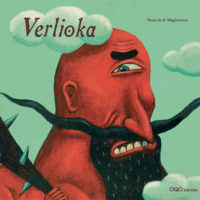The three bears
Marisa Núñez & Minako Chiba
13,50€
- Páginas 36 pages
- Encuadernación hardback
- Medidas 25x23 cm
- Publicación June 2009
In a cabin in the woods there lived three bears. One day, the bears went out for a walk before having breakfast; and Goldilocks found the house empty… Considered an anonymous folkloric tale, it was made popular in 1837 by the British poet Robert Southey, perhaps based on an older version. In Southey’s version, as in that of Eleanor Mure, published six years earlier, the intruder was a mean old woman; in 1849, Joseph Cundall published his “Treasury of Pleasure Books for Young Children” explaining the reasons for changing the old woman for a girl.
More info





